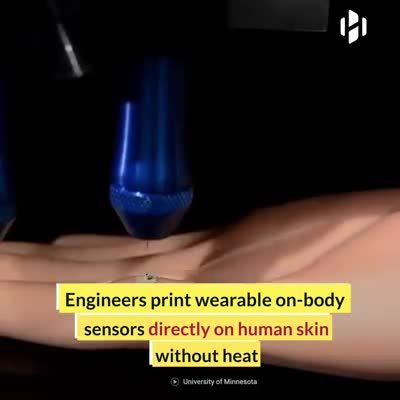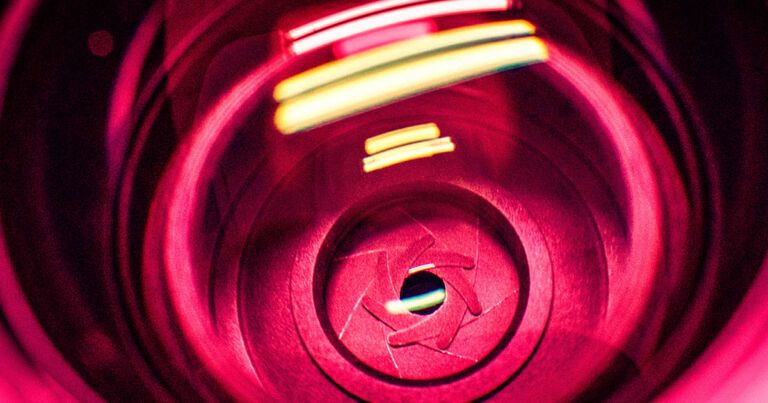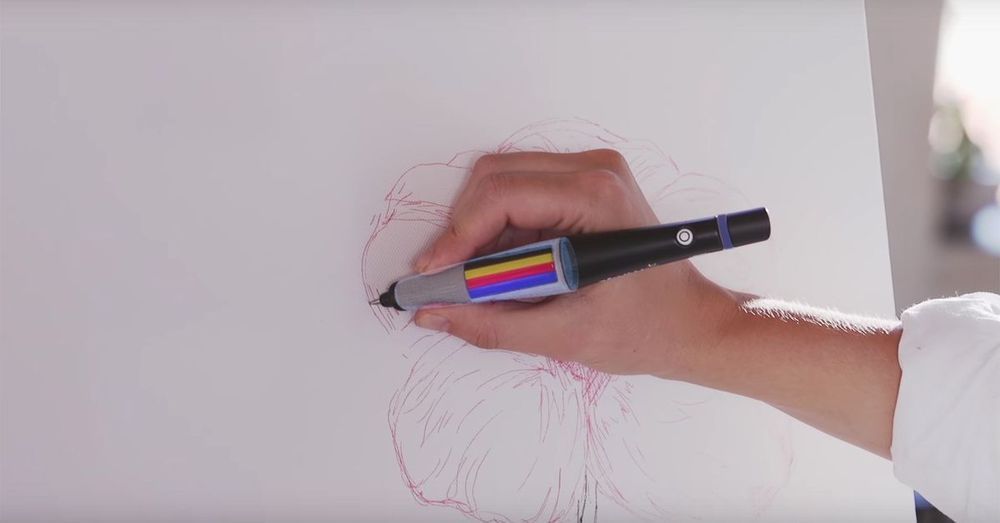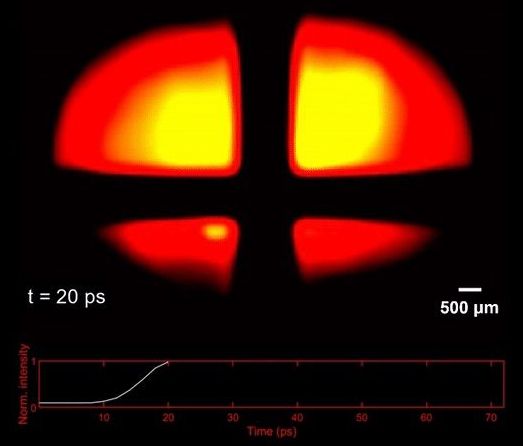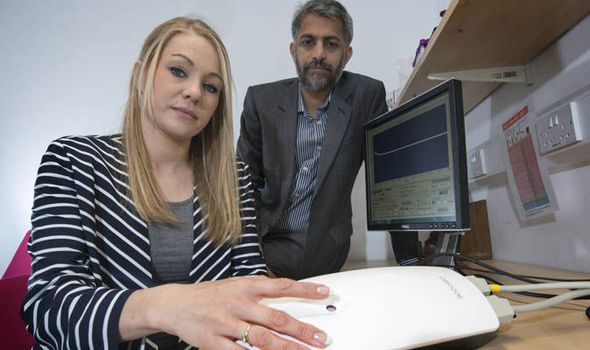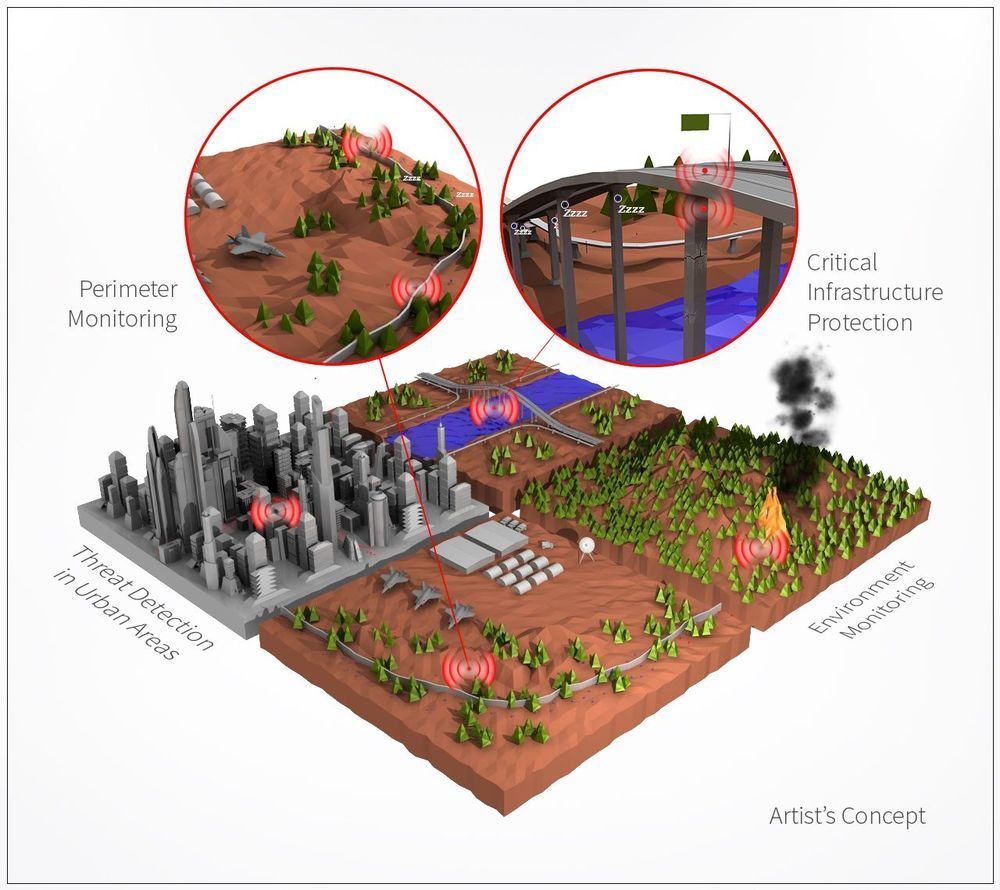Archive for the ‘electronics’ category: Page 48
Oct 17, 2020
Ultra-Speed Caltech Camera Films Light Moving Through Space in 3D
Posted by Raphael Ramos in category: electronics
A very high speed camera.
Wang’s newest camera called, which has the wordy moniker “single-shot stereo-polarimetric compressed ultrafast photography” (SP-CUP), builds on previous iterations that were capable of shooting at even faster rates, some of them capable of shooting up to 70 trillion frames per second.
But what the new Caltech camera brings to the table is its ability to perceive the world more like humans can. The human eye’s depth perception relies on there being two of them — and the new rig can pull off the same stereoscopic trick.
Continue reading “Ultra-Speed Caltech Camera Films Light Moving Through Space in 3D” »
Oct 14, 2020
This crazy pen lets you write and draw in any color you want
Posted by Quinn Sena in category: electronics
Circa 2016
Scribble Pen is a smart pen that lets you draw in any color simply objects by scanning them with its built in color sensor.
Oct 13, 2020
Putting a RED Cinema Camera on a 100mph First-Person Racing Drone
Posted by Quinn Sena in categories: drones, electronics
As drones become better and better at everything they do, it’s only natural photographers and videographers alike start pushing the boundaries of what’s possible. This particular boundary push is not for the faint of heart, however. I’m reasonably new to the drone world. While I’d been keen to dip a toe for a long time, I had been waiting for commercial applications to justify the acquisition. Thankfully, I found a window and jumped right through it.
Oct 12, 2020
The Coming Internet: Secure, Decentralized and Immersive
Posted by William E. Halal in categories: computing, disruptive technology, electronics, information science, internet, open access, supercomputing

The blockchain revolution, online gaming and virtual reality are powerful new technologies that promise to change our online experience. After summarizing advances in these hot technologies, we use the collective intelligence of our TechCast Experts to forecast the coming Internet that is likely to emerge from their application.
Here’s what learned:
Security May Arrive About 2027 We found a sharp division of opinion, with roughly half of our experts thinking there is little or no chance that the Internet would become secure — and the other half thinks there is about a 60% probability that blockchain and quantum cryptography will solve the problem at about 2027. After noting the success of Gilder’s previous forecasts, we tend to accept those who agree with Gilder.
Decentralization Likely About 2028–2030 We find some consensus around a 60% Probability and Most Likely Year About 2028–2030. The critical technologies are thought to focus on blockchain, but quantum, AI, biometrics and the Internet of things (IoT) also thought to offer localizing capabilities.
Continue reading “The Coming Internet: Secure, Decentralized and Immersive” »
Oct 11, 2020
Motion Sensors & “Holograms”
Posted by Jose Ruben Rodriguez Fuentes in categories: electronics, holograms
Motion sensors make avatars dance, via Mark Bartkevitch. Some new technologies about holograms you find here: “A Hologram of Anyone Speaking Any Language” (1 year ago): https://www.facebook.com/EngineeringML/videos/84898885213961…__tn__=K-R and https://bit.ly/308uV3h.
Oct 9, 2020
FBI ‘Drive-By’ Hacking Threat Just Got Real: Here’s Why You Should Be Concerned
Posted by Genevieve Klien in categories: electronics, health
This latest IoT security warning is hard to believe…
Warnings that our IoT devices might be spying on us are nothing new—remember the smart speaker fiasco last year? But at least we expect those devices to be listening and can exercise some caution. The latest such warning, though, takes these risks to a new level. It turns out that there may be surprising little spies hiding in our living rooms.
Last December, the FBI warned that the perilous state of IoT security means that “hackers can use an innocent device to do a virtual drive-by of your digital life.” A week earlier, that same FBI office had cautioned on the danger that smart TVs can allow “manufacturers, streaming services, and even hackers an open door into your home.”
Continue reading “FBI ‘Drive-By’ Hacking Threat Just Got Real: Here’s Why You Should Be Concerned” »
Oct 9, 2020
World’s fastest UV camera records flying photons in real time
Posted by Quinn Sena in categories: electronics, particle physics
As tiny particles traveling at the speed of light, it’s going to take a serious machine to capture photons in action, and an international team of researchers have just pieced together one that is very much up for the job. Dubbed the world’s fastest UV camera, the device is capable of capturing ultra-fast events lasting just a picosecond, quick enough to see UV photons fly through the air in real time.
The device is the handiwork of Canada’s Institut National de la Recherche Scientifique (National Institute of Research) and goes by the name of UV-CUP (compressed ultrafast photography). CUP is an emerging imaging technique that has been used to capture ultrafast events at speeds measured in trillions of frames a second, but has so far been limited to visible and near-infrared wavelengths.
“Many phenomena that occur on very short time scales also take place on a very small spatial scale,” says Jinyang Liang, who led the study. “To see them, you need to sense shorter wavelengths. Doing this in the UV or even X-ray ranges is a remarkable step toward this goal.”
Oct 4, 2020
Laser test replaces needles for diabetes check
Posted by Quinn Sena in categories: biotech/medical, electronics
Circa 2015
A NEW LASER sensor that monitors blood glucose levels without puncturing the skin could transform the lives of millions of diabetics by providing a pain-free way of monitoring blood glucose levels.
Sep 25, 2020
DARPA: Research advances for near-zero-power sensors
Posted by Genevieve Klien in categories: electronics, energy
DARPA’s near-zero-power sensors have extended battery lifetimes from four weeks to up to four years, but more work needs to be done.
